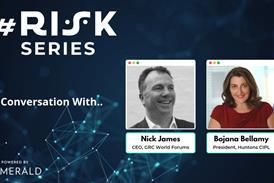The J curve and market failure illustrate an important point that came up at the recent ESG conference as part of DTE London.
It depends on the shape of the J and how shallow the drop is. Let me explain.

The letter J, as you know, is s bit like a shallow U, with an l stuck on top. In economics it is meant to describe how a trade deficit will initially get even worse as a current depreciates and then improve as exports rise.
Or, to put it another way, a J curve represents how things can get worse before they get better.
And that’s why the shape matters. If the U part of the J is shallow, and the l part rapidly dwarfs the initial fall, things are not too bad.
But if the initial drop is quite steep, that may act as a massive disincentive no matter how significant the l.
Let’s take an example: electric vehicles (EVs versus internal combustion engine cars (ICE). Depending on which data you use and other specifics such as the amount you drive, the lifetime cost of an EV, including the cost of charging versus re-fuelling and maintenance, is in most cases either similar or less than with a comparable ICE vehicle. Furthermore, the upfront cost of an EV is falling rapidly such that in a few years, not only will it be cheaper to run an EV, the upfront cost will be similar. As s result, EV sales are likely to increase rapidly (maybe even exponentially, for a short time) over the next ten years.
But we also know that in the early days, EVs cost a lot more than ICE vehicles.
That’s the J curve. At first, we saw a U phase in the cost of EVs; now, we are entering the l phase.
Accepting the U.
In the case of EVs, the U was quite deep. So deep, in fact, that for many years the economics of owning an EV made no sense whatsoever.
If the markets were 100 per cent efficient, they may well have funded EV development during the initial U stage so that EVs could be sold at a massive loss until manufacturers gained scale.
To an extent, this is what happened— that is why Tesla had such an extraordinary valuation relative to revenue
But only to an extent. EVs were only able to find a way through the U phase thanks to two types of subsidies.
The first subsidy was in the form of government tax breaks, etcetera.
But EVs also benefited from a kind of consumer subsidy. The initial adopters of EVs were drawn to a perception that they were doing good — their electric car was either a way to display their green credentials or satisfy themselves that they were doing their bit.
If it wasn’t for climate change fears, this motivation for buying an EV wouldn’t have existed.
So we get this curious result. Later this decade, or maybe already, EVs will make more economic sense than new ICE vehicles — cheaper to run and soon comparable up-front costs. But without climate change, we might never have known. Without climate change, there would have no government subsidies and no motivation for early adopters. The cars would never have got past the down phase in the U part of the J curve
Market failure
The above describes a form of market failure. And maybe this is the problem. Many economists blanch at the idea of market failures in the context described above. Sure economic theory understands the concept of externalities which cause another type of failure but not the type of market failure illustrates by a J curve
Solar
Solar energy is another example of the J curve. We all know that the cost of solar panels has plummeted. Today, in some parts of the world, they represent the cheapest form of energy. But without initial subsidies, solar would never have gained traction, and costs would be prohibitively high.
But there is another twist to the story of solar. The NASA space programme — which had nothing to do with economics — gave solar a push such the technology advanced massively. Without the space programme — which was more a result of the Cold War than economics or capitalism — the solar revolution would probably have never happened.
And the future
Here are two examples of technologies that could hand humanity a decisive victory in the battle against climate change: green hydrogen and cultured meat.
The topic of green hydrogen came up at the recent ESG World Forum Theatre as part of Digital Trust Europe.
→ SEE ALSO: Canute thinking and green steel
Critics of renewables often cite steel as a reason wind and solar can not fulfil all our energy needs. It is a debate that has led to a disagreement between Bill Gates and renowned climate change scientist Michael E Mann. Gates sees the issue of creating steel as a problem for renewables.
But green steel does exist. It just happens to sit at that point on the J curve, which makes it currently uneconomic.
A similar argument could be made for cultured meat — growing meat from stem cells. Since meat takes up around 38 per cent of habitable land on planet Earth, cultured meat represents an incredible opportunity. But right now, the cost is high, and the carbon footprint is quite high too — although studies that look at the carbon intensity of cultured meat often overlook the opportunity created when the land currently used for livestock is freed up.
Both cultured meat and green steel are very important technologies in the battle against climate change — but they need support as they traverse the U part of the J curve.
Fitness landscape
There is another way of looking at the above scenarios, which involves fitness landscapes and seeing the technology landscape illustrated by a series of hills, mountains and valleys. The peak of each mountain represents the ultimate form of technology. But sometimes, another higher mountain represents superior technology. So, for example, the first mountain represents internal combustion engine vehicles, and the second higher mountain represents electric vehicles. But a valley sits between the two mountains. Somehow markets must find a way of getting from one mountain to the next — and it is unlikely that they will manage this unless external factors, like government subsidies, spending on defence or climate change, give us a nudge.

ESG World Forum
Part of the Digital Trust Europe Series
ESG World Forum is a two-day, in-person event taking place as part of the Digital Trust Europe series. 2021 was widely considered “the year of ESG investing.” Given the importance society has placed on ESG issues following COP26, we are likely to see this growth trend continue throughout 2022.
ESG World Forum will bring together a range of leading ESG experts and executive speakers from a range of industries as every major company is considering ESG strategies.
FIND OUT MORE & REGISTER TODAY!

























No comments yet